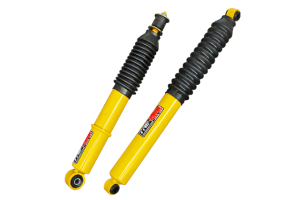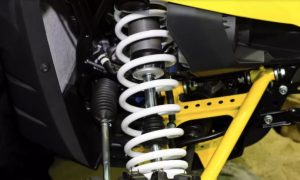When it comes to maintaining ride comfort and vehicle handling, few components are as critical as shock absorbers. These unsung heroes of the suspension system help keep your tires planted firmly on the road, minimize body roll, and absorb bumps from uneven surfaces. But not all shocks are created equal — and choosing between monotube and twin-tube shock absorbers can significantly impact your car’s performance.
In this article, we’ll break down the key differences between monotube and twin-tube shocks, their advantages and disadvantages, and which is better suited for your driving needs.

What Do Shock Absorbers Do?
Shock absorbers, also called dampers, control the suspension’s motion by resisting spring bounce and absorbing kinetic energy. Without them, every bump or pothole would cause excessive bouncing, poor steering control, and longer braking distances.
| Component | Function |
|---|---|
| Shock body | Contains hydraulic fluid and piston |
| Piston & valve | Controls the flow of fluid for damping |
| Rod | Connects piston to the vehicle’s suspension |
| Hydraulic fluid | Transfers motion energy and provides damping |
The Basics: Monotube vs. Twin-Tube
| Feature | Monotube | Twin-Tube |
|---|---|---|
| Construction | Single tube with gas & oil separated | Two concentric tubes, oil & gas may mix |
| Response | Faster, more responsive | Softer, more progressive |
| Heat dissipation | Better due to larger surface area | Less efficient in high performance use |
| Installation position | Can be mounted upside down | Limited mounting flexibility |
| Price | Typically more expensive | More affordable |
| Use case | Performance/sport, off-road | Daily driving, comfort-oriented |
What Is a Twin-Tube Shock Absorber?
A twin-tube shock features an inner (working) cylinder and an outer (reserve) cylinder. The piston moves through hydraulic fluid inside the inner tube, while excess oil flows into the outer tube. There may or may not be gas pressure, depending on whether it’s a hydraulic or gas-charged twin-tube shock.
Pros:
-
Smooth, comfortable ride
-
Cost-effective and widely available
-
Ideal for everyday road use
Cons:
-
Can overheat under aggressive driving
-
Slower response than monotube
-
Not ideal for sport or off-road applications
What Is a Monotube Shock Absorber?
Monotube shocks feature a single large cylinder housing both oil and high-pressure gas, separated by a floating piston. Because of their design, monotubes react faster and handle heat better — making them the go-to choice for performance and off-road vehicles.
Pros:
-
Quicker damping response
-
Superior heat dissipation
-
Better suited for aggressive driving, towing, or off-roading
Cons:
-
Harsher ride on smooth roads
-
Higher cost
-
May be overkill for typical city/highway use
Key Differences in Performance
| Characteristic | Monotube | Twin-Tube |
|---|---|---|
| Damping Speed | Instantaneous | Gradual |
| Ride Comfort | Stiffer, more controlled | Softer, more cushioned |
| Fade Resistance | Excellent in rough conditions | Prone to fade under sustained stress |
| Durability | Better for off-road or heavy loads | Suitable for light-to-moderate loads |
| Application | Performance, SUVs, trucks | Sedans, compact cars, commuters |
Which One Does Your Car Need?

Choosing the right shock absorber depends on how you drive, where you drive, and what you drive.
Best Use Cases for Twin-Tube:
-
Daily commuting
-
Urban and highway driving
-
Budget-conscious drivers
-
Comfort-focused vehicles like sedans or crossovers
Best Use Cases for Monotube:
-
High-performance or tuned vehicles
-
SUVs and pickup trucks
-
Off-road or rugged terrain
-
Towing and heavy loads
-
Drivers who prioritize handling over comfort
Maintenance and Longevity Tips
Regardless of the type you choose, proper shock absorber maintenance ensures long-lasting performance.
| Maintenance Tip | Recommendation |
|---|---|
| Inspect for leaks and rust | Every 10,000 – 15,000 km |
| Check mounting bushings | At each oil change |
| Replace shocks in pairs | Always replace both front or both rear units |
| Consider wheel alignment | After installation or noticeable handling issues |
| Avoid overloaded driving | Exceeding load capacity shortens shock life |
Conclusion
Both monotube and twin-tube shock absorbers have their advantages. If you’re after maximum control, durability, and performance, monotubes are worth the investment. But for daily driving comfort and affordability, twin-tubes are more than adequate.
Take stock of your vehicle type, driving style, and terrain to make the best decision for your suspension system. A smooth, safe, and responsive ride starts with the right shocks.
Buy Shock Absorbers online — Discover high-quality monotube and twin-tube shocks for your specific vehicle model and get the perfect balance of comfort and control.